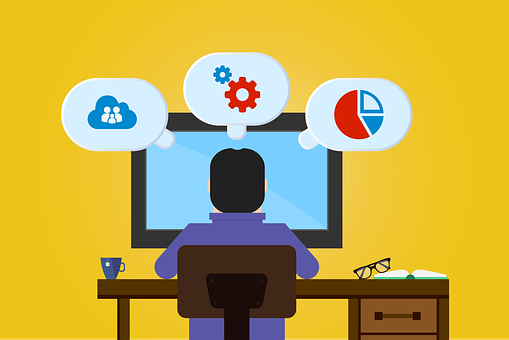6 strategies to help you plan your workforce more efficiently
Having a well-planned and organized workforce is essential for any business or organization to succeed. It's important to have an efficient workforce planning strategy in place to ensure that you are getting the most out of your employees and resources. In this blog post, we will look at 6 strategies that can help you plan your workforce more efficiently. These strategies will help you ensure that you are making the most of your employees and resources, as well as staying on top of changes and trends in the workplace. Read on to find out more!
1) Understand your business goals
By knowing your end goal, you can then create a plan for how your workforce can help you achieve it. Start by looking at the current skills and expertise of your team and identify any gaps or areas for improvement. You should also consider the capacity of each individual and what roles they could play in helping to meet your objectives. Doing so will help you determine which roles need to be filled and the types of people you need to hire in order to achieve success.
2) Know your employees
By having detailed information about each of your employees, you can ensure that they’re in the right roles and able to contribute to the team’s success. It also helps you understand who could be moved into new positions or trained to take on new responsibilities. You’ll also have an easier time tracking the progress of existing projects, predicting potential gaps in skills and knowledge, and managing future workloads.
A workforce management system can help you track changes in the company’s size and structure, as well as manage multiple teams in different locations. With such a system, you’ll be able to quickly identify skills gaps and set up training programs to fill them. It will also allow you to adjust resources as needed, so that you can make sure that you’re making the most effective use of your team.
3) Utilize data
Collecting data can help you better understand the capabilities of your current employees, predict labor trends and assess future staffing needs. You should also use data to identify potential risks, set realistic goals and measure progress.
When gathering data, consider looking at a variety of sources such as customer feedback surveys, performance evaluations, industry reports and payroll records. With this information, you can build a detailed picture of the state of your workforce and develop more effective strategies for the future.
To make the most out of the data you collect, use analytical software and reporting tools that allow you to easily visualize, track and evaluate trends.
4) Manage turnover
Managing turnover is an important part of workforce planning. When employees leave, it can have a significant impact on productivity and morale. The best way to manage turnover is to anticipate it by monitoring the number of employees leaving and looking for patterns. You should also be aware of any competitive salary or benefits packages that could influence employee turnover.
It is important to develop a comprehensive onboarding process so that new hires can be quickly integrated into the company culture and become productive as quickly as possible
5) Simplify the process
Streamlining and simplifying the workforce planning process can help ensure its success. It’s important to consider ways you can simplify the process, as it will reduce stress and increase productivity. This could include automating certain parts of the process, such as performance tracking and goal setting, so you have more time for strategic activities. You should also look for ways to combine similar tasks together, or even outsource some of them to free up resources. Finally, centralizing data and resources into one place can make the process easier to manage and keep everyone organized.
Also read: On-Premise or SaaS: Which is Better for Your Business?
6) Get buy-in from leadership
It is crucial to get buy-in from leadership in order to ensure your workforce planning is successful. The most important thing is to make sure that everyone understands the goals of the organization and how workforce planning plays a role in achieving those goals. Start by having a conversation with leadership about the strategic goals for the organization and how workforce planning fits into that picture. This will help make it easier to explain why the plan is necessary and how it will help the organization achieve its objectives.




Comments
Post a Comment